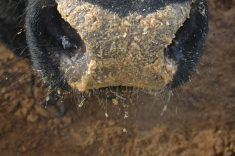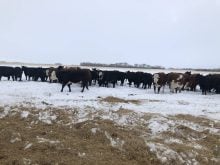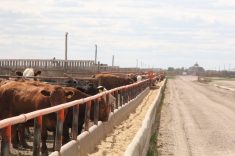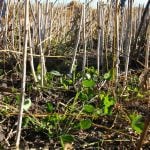After a number of difficult years brought on by market-access challenges, high feed costs, a rising currency, and recessionary demand, we are finally beginning to see improvement in market fundamentals and some strength in cattle prices.
The market improvement has largely been a function of reduced supplies due to contraction in the North American cattle herd, combined with improved offshore market access opportunities. While demand has improved for some products, demand for the higher-value cuts have yet to show meaningful improvement.
While cattle prices are improving, the strong Canadian dollar is tempering the price recovery for Canadian producers, and most economists believe a strong dollar will be a reality for some time.
Read Also

Promoting Canadian beef in Korea
Canada Beef reports on recent activities, including working with an influencer and an executive chef from Korea
It’s clear that we can no longer depend on a cheap currency to hide any industry inefficiencies, and improving our competitiveness will be crucial for the long-term viability of our industry. In my view, the ability to implement new technology in the Canadian cattle industry will have a significant influence on our competitiveness.
Canada’s animal-ID system and our current traceability capability has already assisted in differentiating our product in some markets, even as we continue to press for improvements to the RFID technology to address producer concerns. While we must move carefully, it is important we continue to enhance our traceability capability as technology improves.
Camera grading, a tool to be used by the grader to facilitate the application of a consistent grade standard across Canada, will provide detailed carcass and grade information for individual carcasses. Camera-assisted grading has the potential to provide the precise individual carcass evaluations to all participants in cattle production. Producers can interpret and use this data to improve on their herd management, genetics, and to better meet the needs of their end customer.
This underscores the importance of the Beef InfoXchange System or BIXS. BIXS facilitates the sharing of individual animal performance, genetic, animal health and detailed carcass data through the entire beef chain. BIXS will enable better communication between the cow-calf, marketing, feedlot and packing sectors on an individual animal basis and will offer another mechanism for producers to develop business opportunities.
With preliminary testing of the program now completed, BIXS is aiming for a mid-September roll-out for foundation partners and then cow-calf producers on high-speed Internet. BIXS is the most exciting initiative currently in the industry and we look forward to seeing it roll out.
Research is another important piece in improving industry competitiveness. I was very pleased when Federal Agriculture Minister Gerry Ritz announced more than $6 million in funding for the Beef Cattle Science Research Cluster in March.
Finding new ways to reduce production costs, as well as new ways to improve product value is the focus of Beef Cattle Research Council (BCRC) research funded by the National Check-off and Agriculture and Agri-Food Canada through Canada’s Beef Science Cluster.
This research focuses on improving productivity through better feed efficiency, economical SRM disposal alternatives, improved animal health and welfare, and more productive forage and grasslands. Improved product value is achieved through research focused on improved food safety and improved product quality.
Approximately 25 per cent of Beef Science Cluster funds are devoted to beef-quality research, and with good reason. In the area of beef quality, it has been estimated that a one per cent improvement in the value of cuts from the loin, rib and sirloin would be worth $27 million per year to Canada’s beef industry. A one per cent improvement in the value of cuts from the hip, chuck, brisket and shank would be worth $39 million per year to Canada’s beef industry. Reducing the incidence of dark cutters to 1999 levels would save the Canadian beef industry $13 million annually. In addition to the implementation of new technology, the future of the industry is equally weighted on attracting dedicated, bright, and enthusiastic individuals into agriculture. In August, the CCA held its national convention in partnership with the International Livestock Congress (ILC) to enable networking opportunities for young people in agriculture.
A total of 20 students were on hand for the ILC Calgary Beef 2010, including students from Brazil, Australia, the United States and across Canada. In spite of an agenda packed with high-calibre international industry speakers, many students reported that meeting seasoned cattle industry leaders as the highlight of the event. I can tell you that participating producers were equally enthused, with many saying they were truly encouraged by the enthusiasm for agriculture being exuded by this eager younger generation.
This same level of enthusiasm is evident in the huge response to the new national youth initiative recently announced by the CCA. The Cattlemen’s Young Leaders (CYL) Development Program was developed to provide industry-specific training and mentorship opportunities to young producers between the ages of 18 and 35. The program is currently in the pilot phase in Alberta and is being well received by both applicants and industry leaders interested in participating.
I believe we are heading into an exciting time to be involved in the cattle industry. Supplies are tight, market access is improving, and we are beginning to see prices improve. Finding and implementing technological solutions to the industry’s challenges will play a big part in maintaining our competitive edge today and into the future.
———
TravisToews ispresidentof theCanadian Cattlemen’s Association















